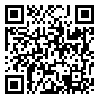1. Reed E, Amaro H, Matsumoto A, Kaysen D. The relation between interpersonal violence and substance use among a sample of university students: Examination of the role of victim and perpetrator substance use. Addictive behaviors. 2009 Mar 1;34(3):316-8. [
DOI]
2. van den Brink W, Haasen C. Evidence-based treatment of opioid-dependent patients. The Canadian Journal of Psychiatry. 2006 Sep;51(10):635-46. [
DOI]
3. Daley DC, Marlatt GA, Spotts CE. Relapse prevention: clinical models and intervention strategies. Principles of Addiction Medicine. 3rd ed. Chevy Chase, MD: American Society of Addiction Medicine. 2003:467-85. [
DOI]
4. Walsh JJ, Balint MG, SJ DR, Fredericksen LK, Madsen S. Predicting individual differences in mindfulness: The role of trait anxiety, attachment anxiety and attentional control. Personality and Individual differences. 2009 Jan 1;46(2):94-9. [
DOI]
5. Dozois DJ, Dobson KS. A longitudinal investigation of information processing and cognitive organization in clinical depression: Stability of schematic interconnectedness. Journal of Consulting and Clinical Psychology. 2001 Dec;69(6):914-25. [
DOI]
6. Kessler RC, McGonagle KA, Zhao S, Nelson CB, Hughes M, Eshleman S, et al. Lifetime and 12-month prevalence of DSM-III-R psychiatric disorders in the United States: results from the National Comorbidity Survey. Archives of general psychiatry. 1994 Jan 1;51(1):8-19. [
DOI]
7. Segal Z, Williams M, Teasdale J. Mindfulness-based cognitive therapy for depression: A new approach to preventing relapse: Book review.New York: Guilford press; 2002: 351-2.
8. Williams M, Penman D. Mindfulness: a practical guide to finding peace in a frantic world. Hachette UK; 2011,pp: 273-6.
9. Rahmani M, Salehi M. The Effect of Mindfulness training on reducing anxiety in patients with anxiety disorders. In 2018 [cited 2020 Jan 21]. Available from: [
Article]
10. Roemer L, Lee JK, Salters-Pedneault K, Erisman SM, Orsillo SM, Mennin DS. Mindfulness and emotion regulation difficulties in generalized anxiety disorder: Preliminary evidence for independent and overlapping contributions. Behavior therapy. 2009 Jun 1;40(2):142-54. [
DOI]
11. Mohammad Khani P, Khanipour H. Knowledge-based cognitive therapy in the treatment of depression. Tehran: Publications University of welfare and Rehabilitation Sciences; 2012: 312-7. [Persian]
12. Hayes S C, Strosahl K, Wilson K G. Acceptance and Commitment Therapy. (2ed). New York: Guilford Press. 2003: 411-7.
13. Abdolghadery M, Kafee M, Saberi A, Aryapouran S. The effectiveness of mindfulness-based cognitive therapy (mbct) and cognitive behavior therapy (cbt) on decreasing pain, depression and anxiety of patients with chronic low back pain. Journal of Shahid Sadoughi University of Medical Sciences (JSSU). 2014 Feb 15;21(6):795-807. [ Persian] [
Article]
14. Seyed Asiaban S, Manshaee GR, Askari P. Compare the effectiveness of schema therapy and mindfulness on psychosomatic symptoms in people with substance abuse stimulants. Etiad pajohi. 2017; (40) 10: 181-99. [ Persian] [
Article]
15. Witkiewitz K, Marlatt GA, Walker D. Mindfulness-based relapse prevention for alcohol and substance use disorders. Journal of cognitive psychotherapy. 2005 Oct 1;19(3):211-9. [
DOI]
16. Beck AT, Epstein N, Brown G, Steer RA. An inventory for measuring clinical anxiety: psychometric properties. Journal of consulting and clinical psychology. 1988 Dec;56(6):893-7. [
DOI]
17. Mohammad Khani P, Dabson KE. Psychometric coordinates of Beck Depression Inventory-2 in a large sample of depressed patients. Special Issue of Rahabilitation in Mental illness and disorders. 2007; 8 (29): 80-6. [Persian]
18. Crane R. Mindfulness Based Cognitive Therapy. New York. Routledge Press.2009: 18-19.
19. Kabat‐Zinn J. Mindfulness‐based interventions in context: past, present, and future. Clinical psychology: Science and practice. 2003;10(2):144-56. [
DOI]
20. Agha Yousefi AR, Oraki M, Zare M, Emani S. Effectiveness of Mindfulness in Decreasing Stress, Anxiety and Depression among the Substance Abusers. Journal of Thought & Behavior in Clinical Psychology. 2013; 7(26):17-26. [Persian] [
Article]
21. Ghomri Kivi H, Nader M, Savari H, Esmaeili M. The Effectiveness of Cognitive- Behavioral Therapy and Mindfulness on Mental Health of Crackers. Sh-addiction. 2014; 1(4): 47-62. [Persian]
22. Emanuel AS, Updegraff JA, Kalmbach DA, Ciesla JA. The role of mindfulness facets in affective forecasting. Persd Individ Dif. 2010;49(7):815-8. [
DOI]
23. Linehan M. Cognitive behavioral treatment of borderline personality disorder. New York: Guilford Press.1993: 546-58.
24. Kabat Zinn J. Full catastrophe living: How to cope with stress, pain and illness using mindfulness meditation. New York: Dell. 1990: 76-77.
25. Mousavi SA, Zare-Moghaddam A, Gomnam A, Mirbluk Bozorgi A, Hasani F. Mindfulness from theory to therapy. Frooyesh. 2019; 8 (1):155-170. [Persian] [
Article]

 ، مهدی دهستانی*2
، مهدی دهستانی*2 
 ، محسن فاطمی3
، محسن فاطمی3 
 ، سوسن علیزاده فرد4
، سوسن علیزاده فرد4 





